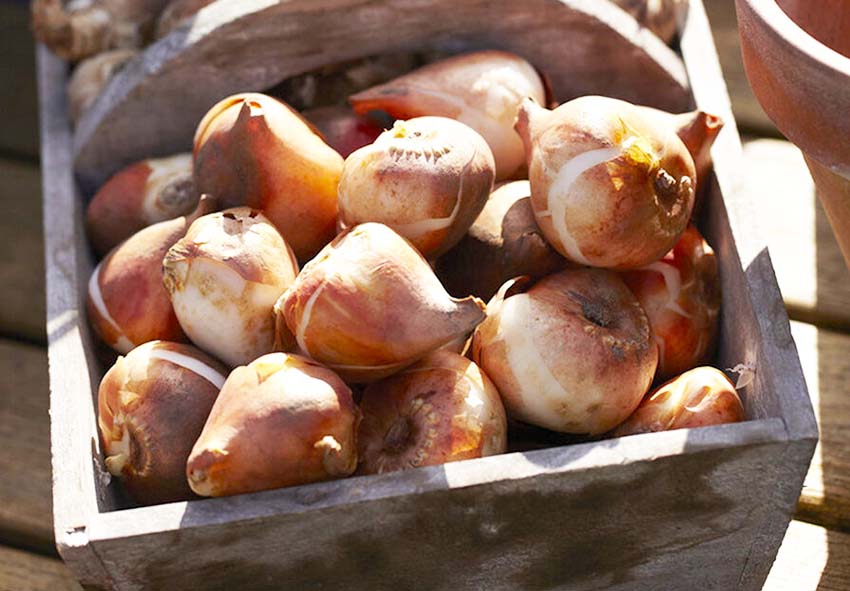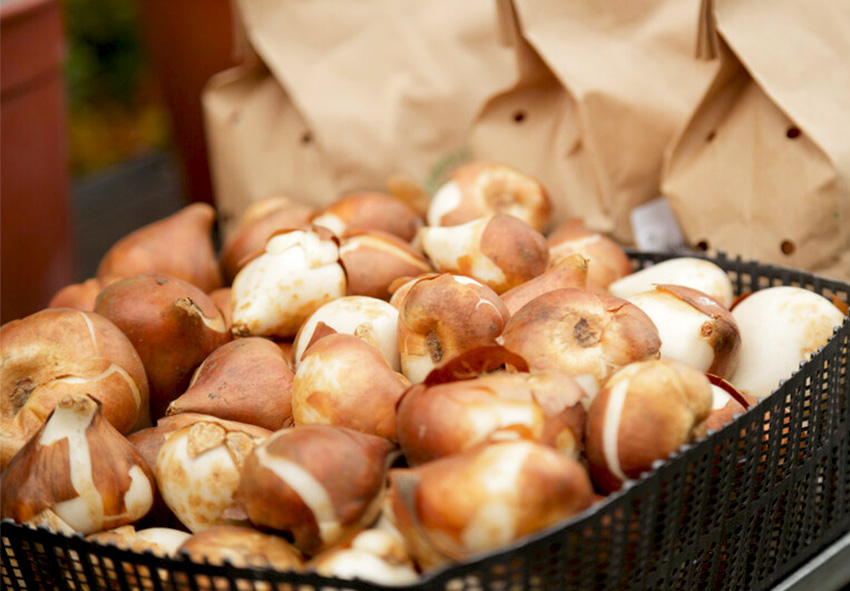Tulips are one of the most iconic spring flowers, admired for their vibrant colors and elegant shapes. Instead of buying new bulbs every year, many gardeners choose tulip propagation to multiply their existing plants. With the right methods and care, you can expand your tulip collection and enjoy even more stunning blooms season after season. Our gardening blog is a perfect place to find all the information you need!
Understanding Tulip Propagation

Propagating tulips may sound complex, but it is a simple and rewarding gardening practice. By learning how tulips naturally multiply, you can encourage healthy growth and save money on buying new bulbs. Understanding when and how to propagate is the first step to success.
What is tulip propagation?
Tulip propagation is the process of creating new tulip plants from existing bulbs or seeds. Unlike some flowers, tulips rarely regrow well from cuttings. Instead, they reproduce through bulb division or seed germination, each requiring patience and proper techniques.
Why gardeners choose to propagate tulips
Many gardeners propagate tulips to maintain favorite varieties, expand colorful displays, and reduce annual costs. Propagation also allows you to experiment with growing tulips in different areas of your garden. For those who enjoy a hands-on approach, it adds a deeper level of satisfaction to the gardening process.
Best time to propagate tulips
The best time to propagate tulips is in late spring or early summer, after the foliage has yellowed and died back. At this stage, bulbs are dormant and can be safely lifted, divided, and replanted. Seed propagation should begin in autumn, after harvesting and preparing seeds.
Main Tulip Propagation Methods
There are several ways to propagate tulips, and each method has its own advantages. Choosing the right approach depends on whether you prefer quicker results with bulbs or long-term growth with seeds.
Propagating tulips from bulbs and offsets
The most common method of tulip bulb propagation is by separating offsets. These small bulbs naturally form around the main bulb underground. To multiply tulip bulbs, lift them carefully, separate the offsets, and replant them in well-drained soil. Over time, these offsets will grow into mature flowering plants.
Growing tulips from seeds
Growing tulips from seeds is less common but offers the possibility of new hybrids. After flowering, tulips produce seed pods that can be collected. The seeds need a cold stratification period to germinate successfully. Keep in mind this method takes several years before flowers appear, but it can be rewarding for patient gardeners.
Forcing tulips indoors
Another propagation-related technique is forcing tulips indoors. By chilling and planting tulip bulbs in pots, gardeners can enjoy blooms during winter or early spring. While this doesn’t multiply tulip bulbs, it’s a useful method for enjoying flowers out of season. Forcing is best combined with bulb division for long-term propagation.
Step-by-Step Guide: Tulip Bulb Propagation

If you’re looking for reliable results, propagating tulips through bulb division is the best method. Below is a step-by-step process to ensure success in multiplying tulip bulbs:
- When to dig up tulip bulbs: Dig up tulip bulbs after the foliage has completely died back. This usually occurs in late spring or early summer, signaling that the plant has stored enough energy for the next growth cycle.
- Identifying and separating offsets: Carefully brush away soil to reveal the offsets clustered around the main bulb. Gently twist or cut them apart, making sure each offset is firm and disease-free. Healthy offsets are the key to successful tulip bulb propagation.
- Preparing bulbs for replanting: Clean and dry the bulbs before replanting. If needed, treat them with a fungicide to prevent rot. Store them in a cool, dry place until planting time in autumn.
- Replanting tulip bulbs for best results: Plant bulbs in well-drained soil at a depth of about three times their height. Space them evenly to allow room for growth. With proper planting and care, new bulbs will establish and produce vibrant blooms in future seasons.
Caring for Newly Propagated Tulips
Newly propagated tulips require special attention to ensure healthy growth. By providing the right soil, nutrients, and protection, you’ll set the foundation for strong plants and colorful blooms.
Soil and watering needs
Tulips thrive in well-drained soil, as waterlogged conditions can lead to bulb rot. Water sparingly after planting, and only increase watering during active growth in spring. Sandy or loamy soil types are best because they allow excess moisture to drain quickly. Adding organic matter or compost can improve soil texture and provide essential nutrients for healthier bulbs.
Fertilization for strong growth
Apply a balanced fertilizer at planting time and again in early spring. This gives young bulbs the nutrients they need to grow strong roots and vibrant flowers. Avoid fertilizers high in nitrogen, as they encourage foliage growth at the expense of blooms. Slow-release formulas are especially effective for supporting tulip development over time.
Protecting bulbs from pests and diseases
Tulip bulbs are susceptible to pests like rodents and diseases such as fungal rot. Use wire mesh to protect bulbs from animals, and avoid overwatering to reduce the risk of disease. Regularly inspecting bulbs for early signs of damage can help prevent problems before they spread. Rotating planting areas every few years also reduces the risk of soil-borne infections.
Common Mistakes to Avoid When Propagating Tulips

Even experienced gardeners can make errors during tulip propagation. Avoiding these mistakes will greatly increase your success rate. Taking extra care at the planting and storage stages can make the difference between thriving blooms and failed propagation. By being mindful of common pitfalls, you can ensure stronger, healthier tulip plants.
Planting offsets too deeply
Offsets should be planted at the correct depth—about three times the bulb’s height. Planting too deep can delay growth or prevent flowering. On the other hand, planting them too shallow may expose bulbs to frost damage. Always measure carefully when replanting to give bulbs the best chance of success.
Overwatering after propagation
Newly planted bulbs require only light watering. Overwatering leads to bulb rot and is one of the most common reasons propagation fails. Instead, allow the soil to dry slightly between watering sessions. This helps bulbs establish without the risk of fungal infections.
Using damaged or diseased bulbs
Always inspect bulbs before planting. Soft, discolored, or moldy bulbs should be discarded, as they can spread disease and reduce the success of your propagation efforts. Choosing only firm, healthy bulbs will increase your chances of strong growth. Investing time in bulb inspection ensures a healthier tulip bed in the long run.
Conclusion
Learning how to propagate tulips is a rewarding way to multiply your garden’s beauty year after year. From dividing offsets to experimenting with seeds, there are several methods to explore. By following proper care practices and avoiding common mistakes, you’ll enjoy healthy tulip blooms for many seasons to come!
Frequently Asked Questions (FAQs) about Tulip Propagation
1. How do you propagate tulips successfully?
Tulips are best propagated through bulb offsets, also known as daughter bulbs. After the flowering season, carefully dig up the main bulb and separate the offsets. Replant them in well-drained soil at the correct depth. With proper care, these small bulbs will mature and produce flowers in a few years.
2. When is the best time to propagate tulips?
The best time to propagate tulips is in late summer to early fall, after the foliage has completely died back. This allows bulbs to rest during dormancy before being replanted. Planting offsets in autumn ensures they receive the necessary cold period over winter to encourage healthy spring growth.
3. Can I order tulip bulbs from your online store?
Yes, you can order tulip bulbs from our online store Dutch-bulbs.com. We offer a wide selection of tulip varieties suitable for different climates and preferences. We take pride in providing top-quality plants that are carefully cultivated and shipped with care to ensure they reach you in perfect condition.
4. Can you propagate tulips from seeds?
Yes, tulips can be grown from seeds, but it is a slow and challenging process. Seeds may take 5 to 7 years to develop into flowering plants, which is why most gardeners prefer bulb offsets. Propagation by seeds is typically reserved for breeding new tulip varieties rather than home gardening.
5. How deep should tulip offsets be planted?
Tulip offsets should be planted at a depth equal to about three times the bulb’s height. This helps protect them from frost and ensures stable root development. Planting too shallow risks exposure to temperature fluctuations, while planting too deep can hinder growth or delay flowering. Always measure before planting.
Published: 21.10.2025
